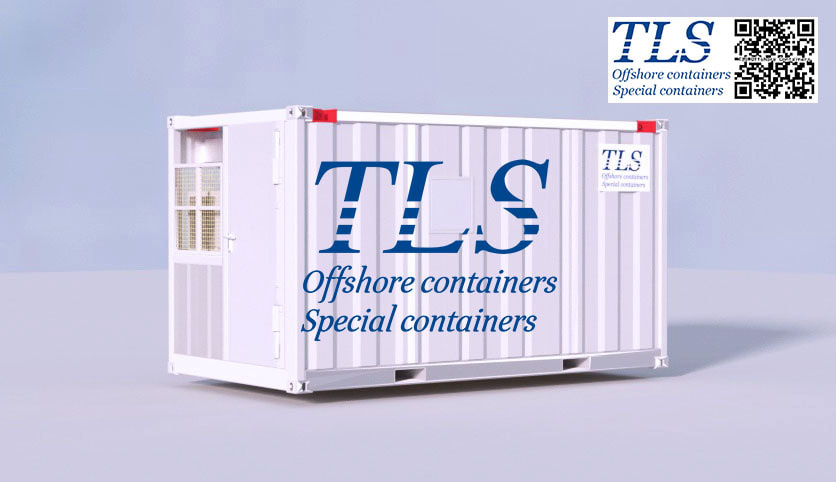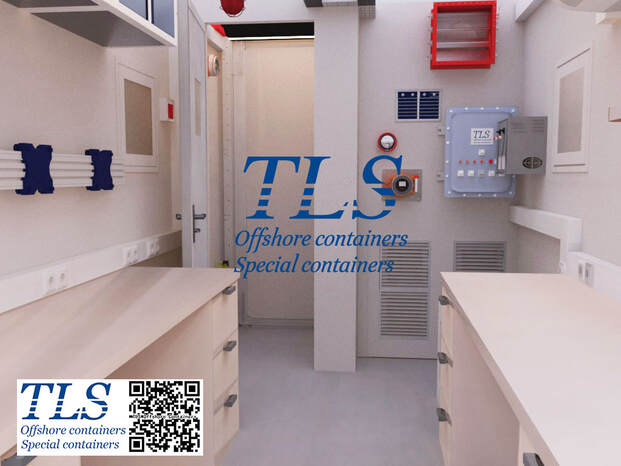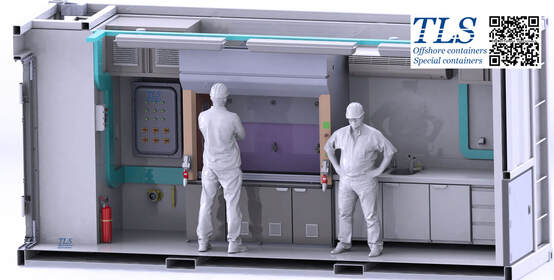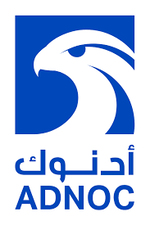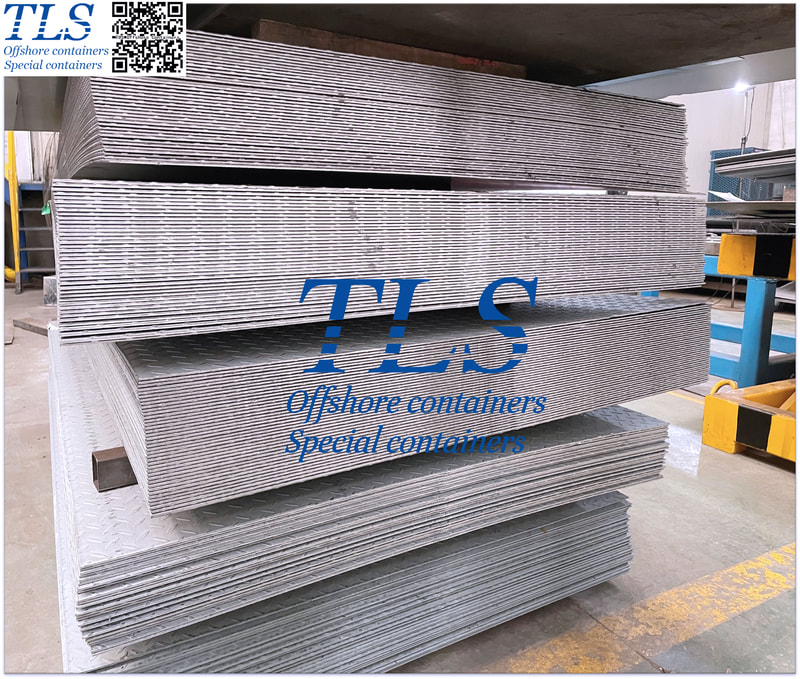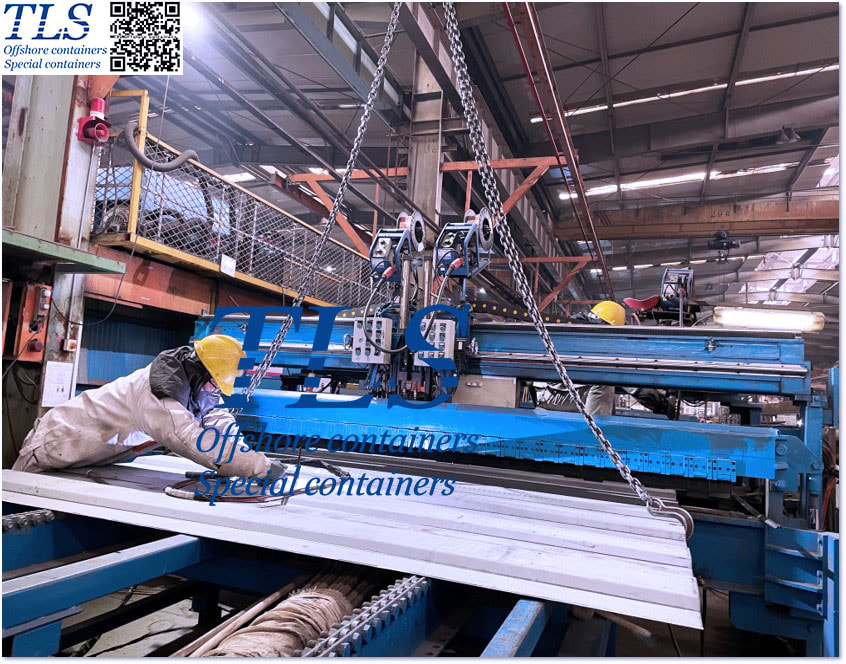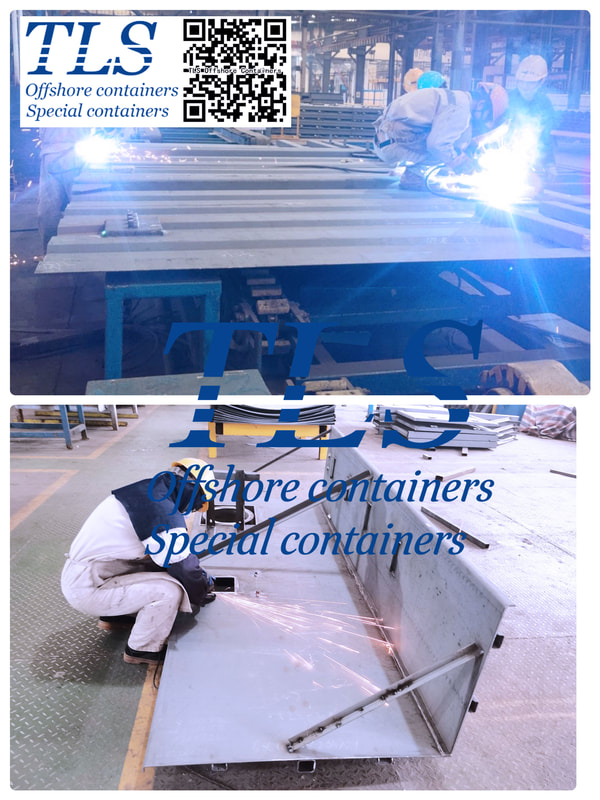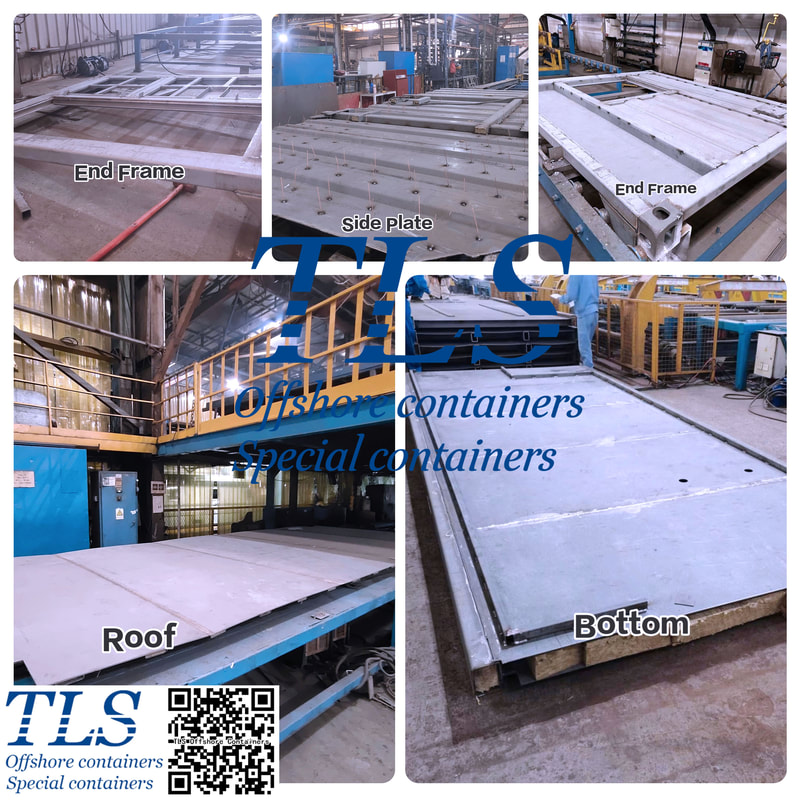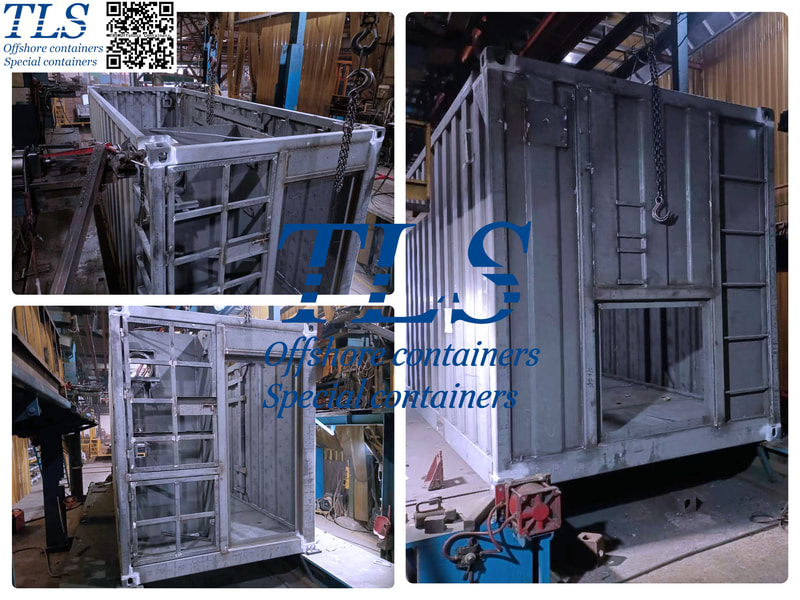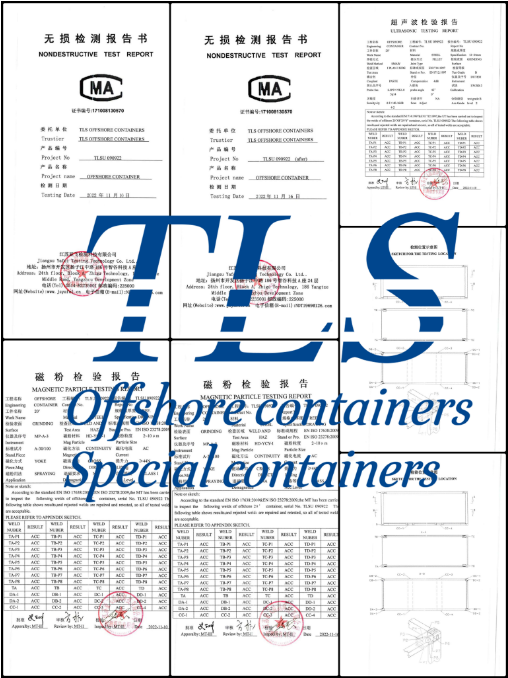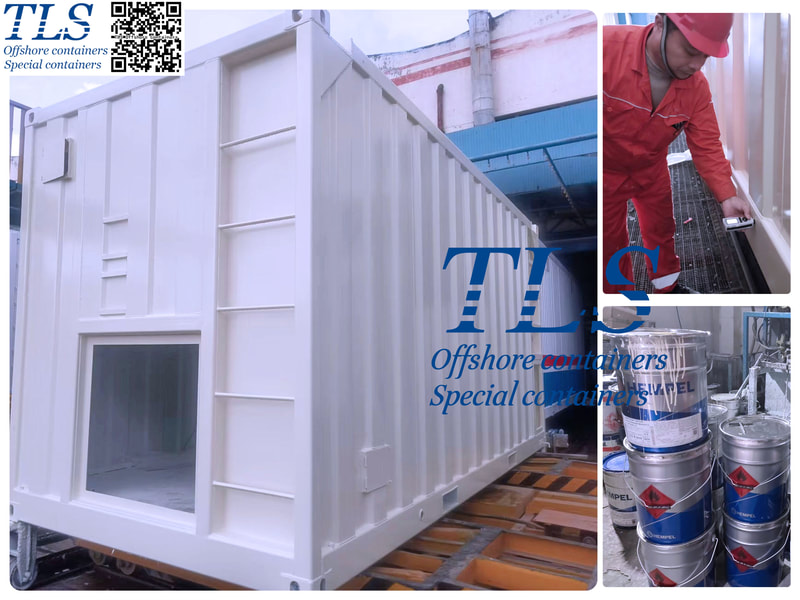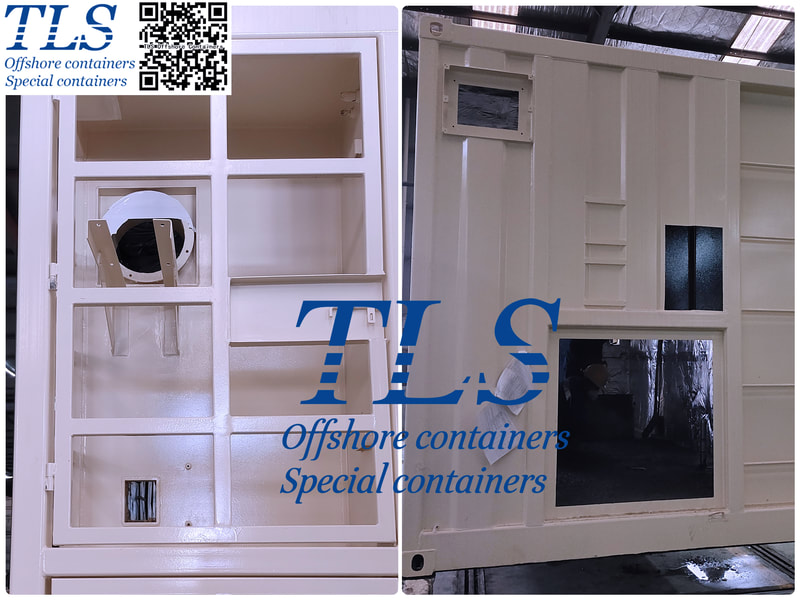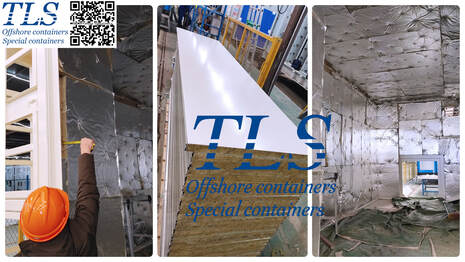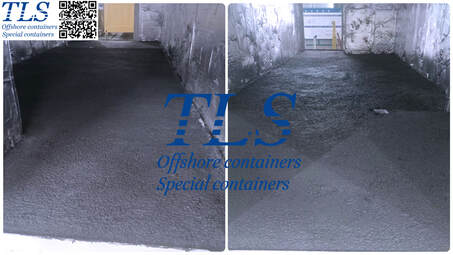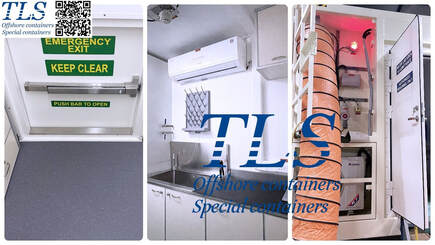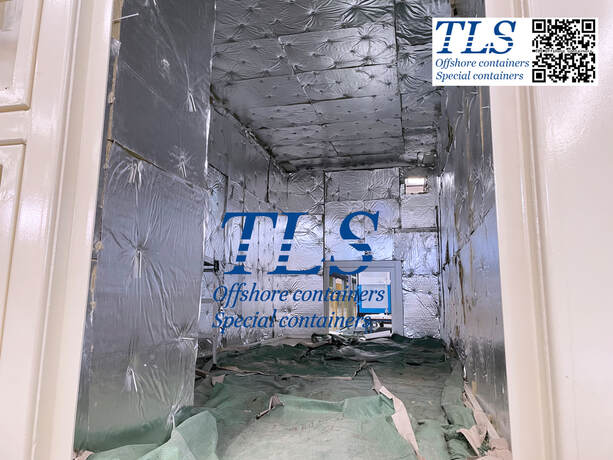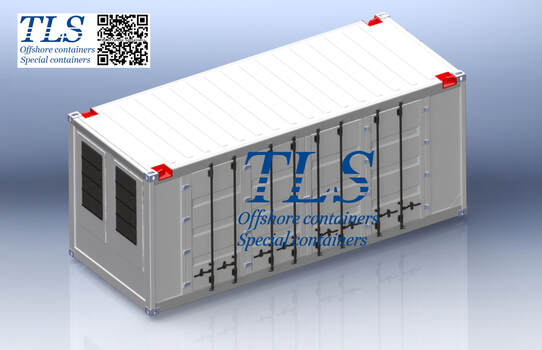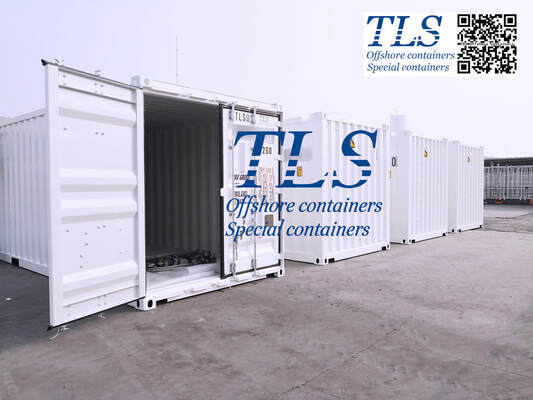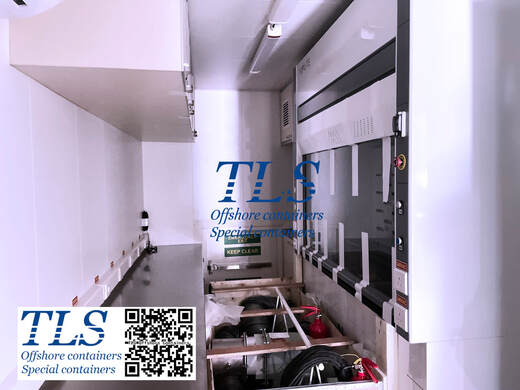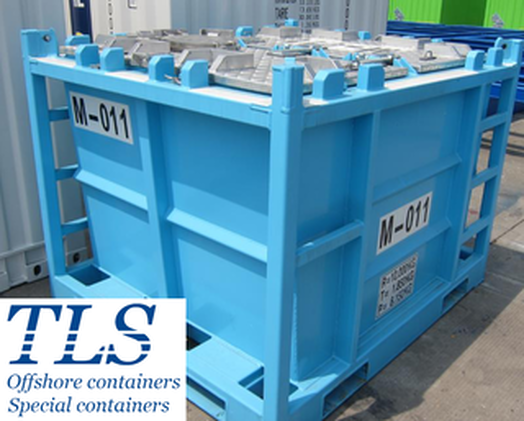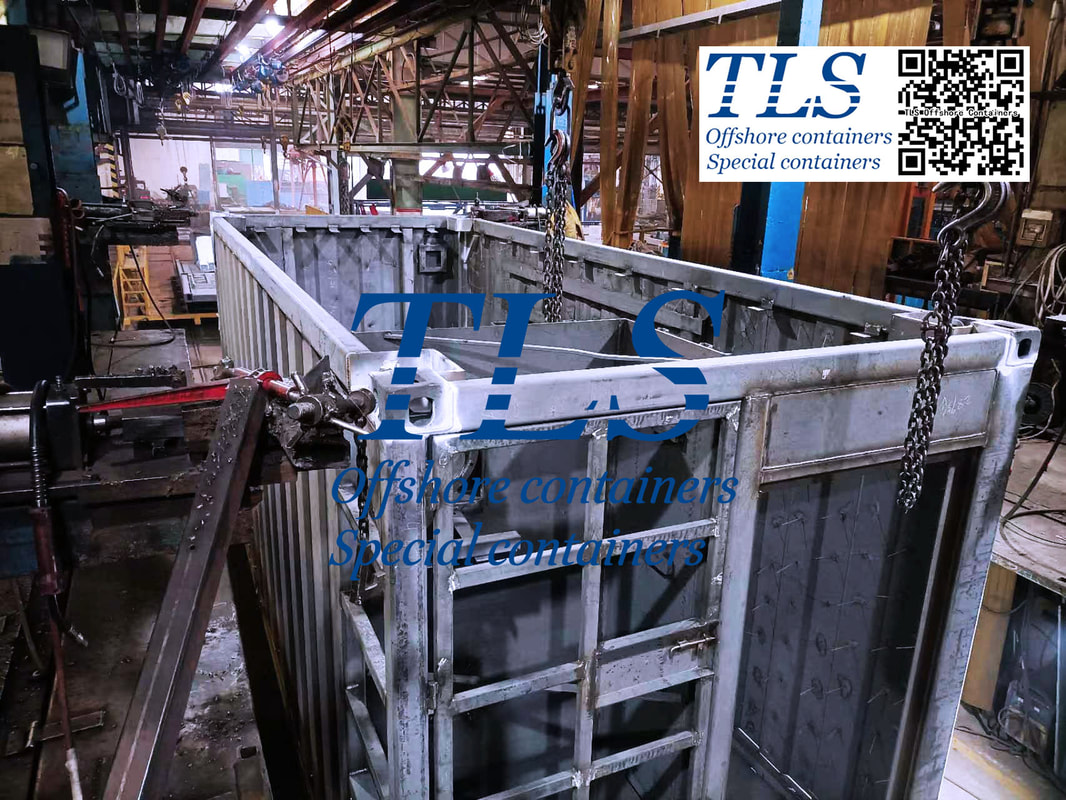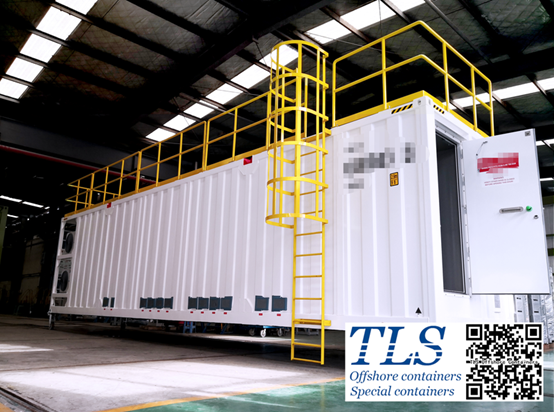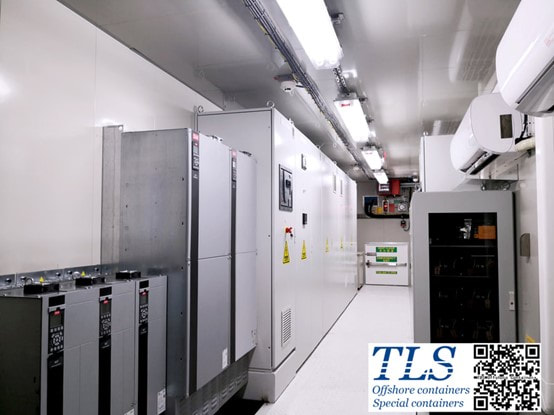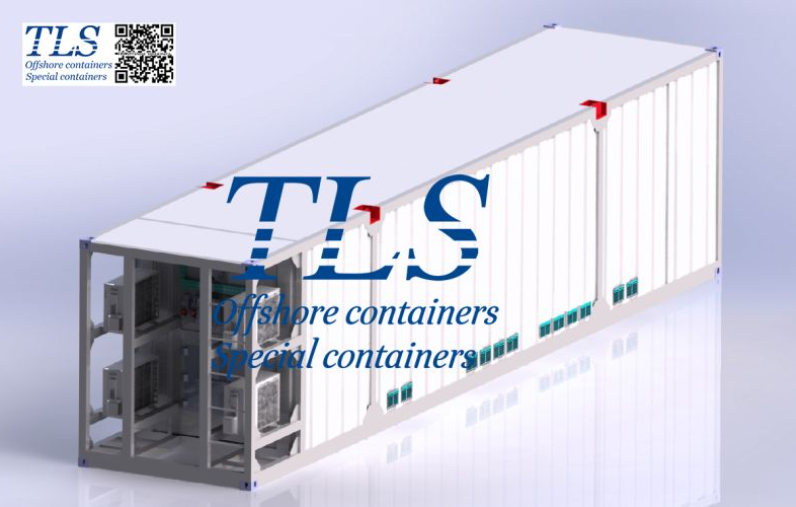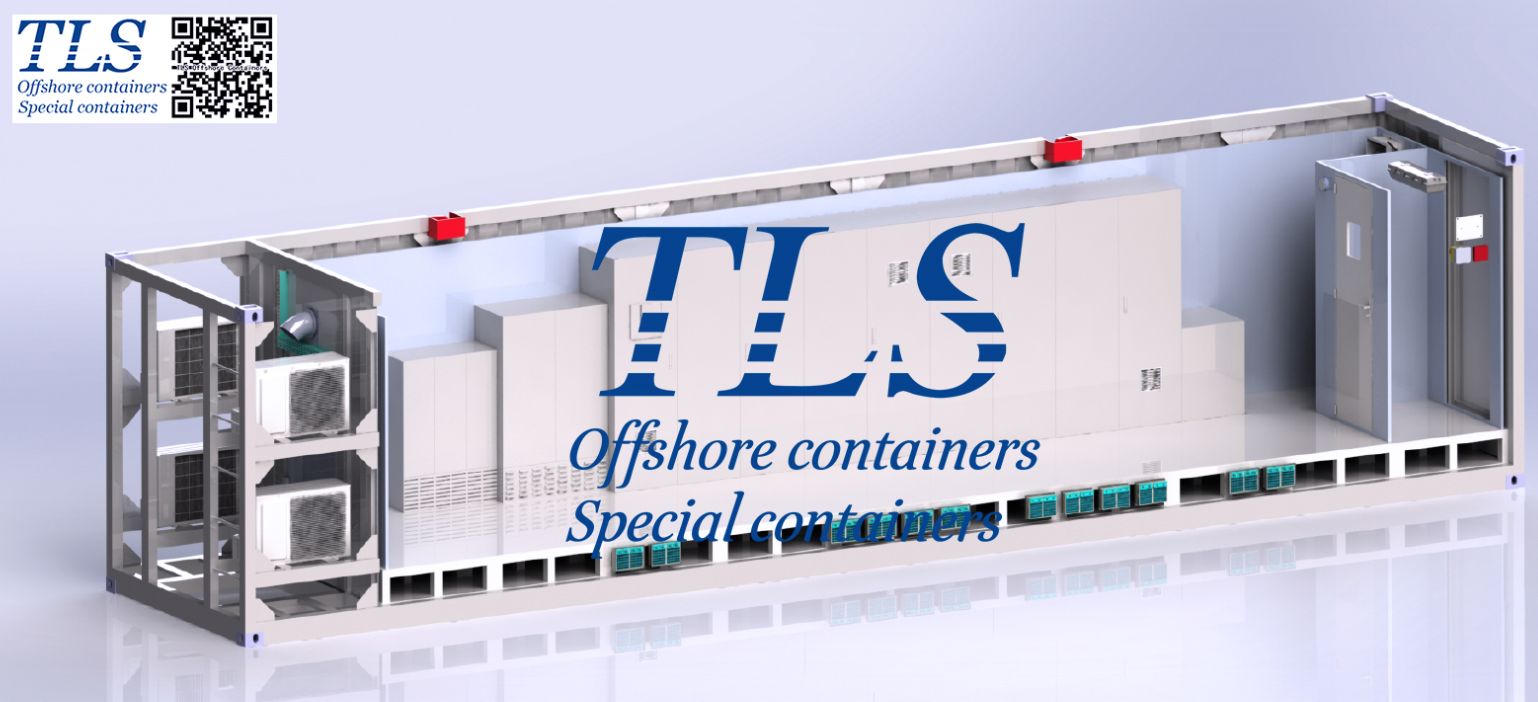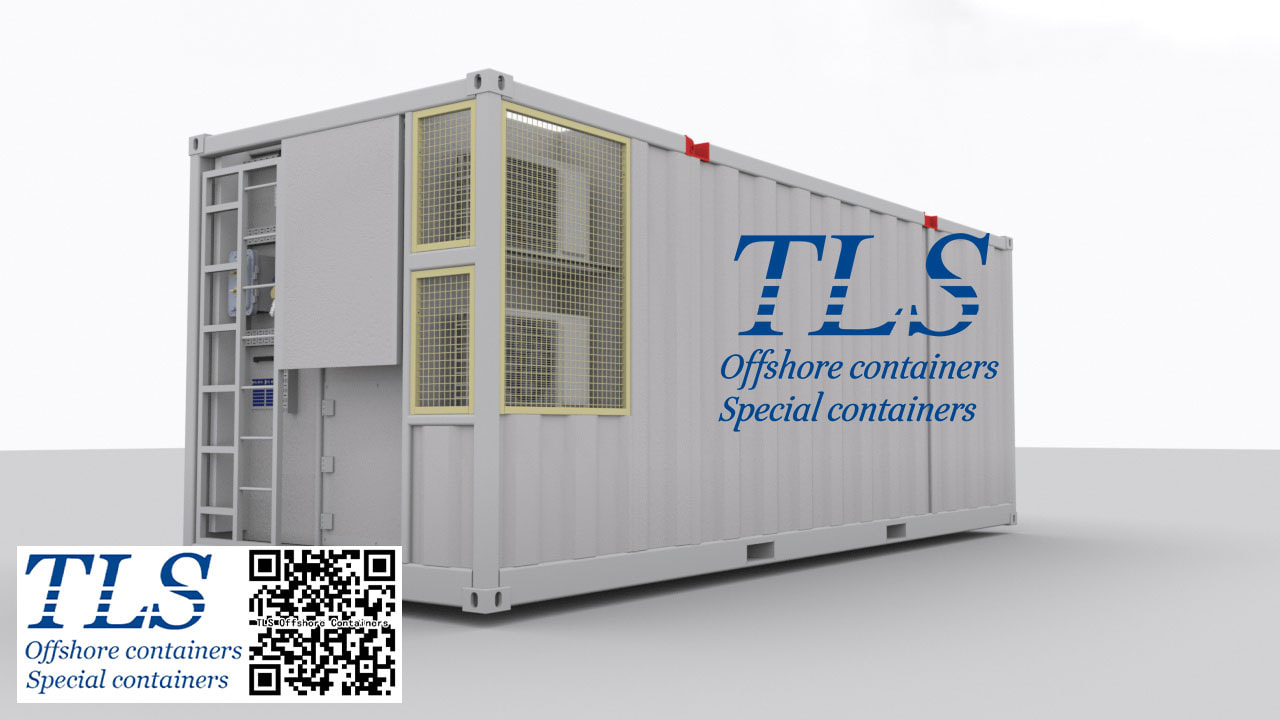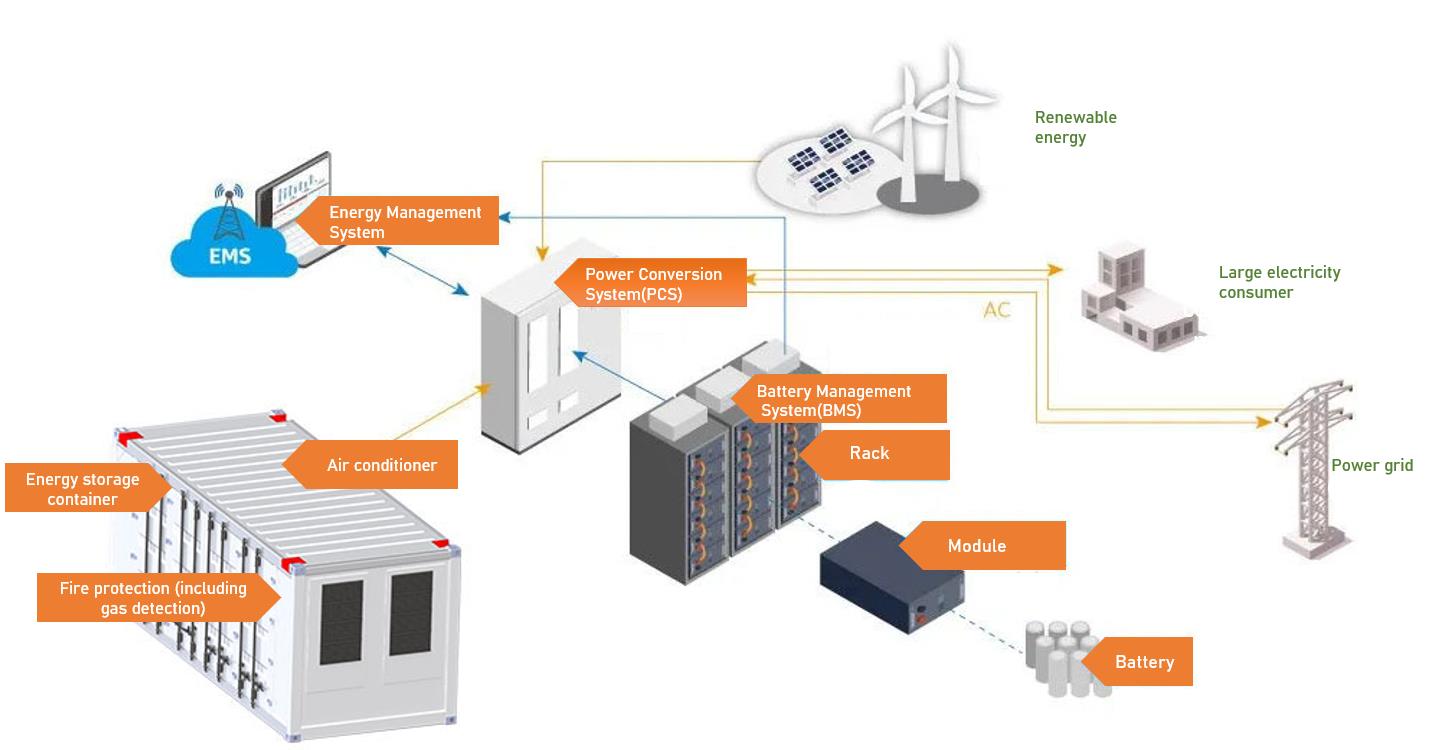|
Main structure: Mainly divided into two categories 1. Important and non-redundant primary structures, which are the basic components that transfer the resultant load of the cargo to the crane hook or forklift (i.e. form the transfer path from the payload to the sling load), include at least: Top and bottom side beams, top and bottom end beams, corner posts, lifting lugs, fork grooves 2. Non-basic main structure. Examples include floors and other components with major functions other than those described for basic components. Baffles, stacking corners and end plates on hollow sections fall into this category. In addition non-essential primary structures also include protective framing members. Secondary structure The non-loaded parts that do not need to be considered in design calculations are called secondary structures, including 1. Door, wall and roof panels, non-slip cover 2. Reinforced plate and corrugated plate 3. Parts used only to protect tank structure 4. Internal fixed points TLS is an international supplier that can customize onshore | offshore special containerised solutions,Any requirements, please contact us directly: E-mail: [email protected] Hotline: +65-65637288; +65-31386967 The ventilation part of the positive pressure explosion-proof container mainly includes the cooling and heating system of the fan for air supply and ventilation, indoor air conditioning, and heater. In the container, the air is supplied from a long distance by a centrifugal exhaust fan to finally achieve the purpose of indoor positive pressure. Refrigeration/Heating: Choose split air conditioners for explosive gas atmospheres. The ambient temperature is -7°C~43°C, and 80% of the working conditions are widely used in hazardous environments such as oil exploration and refining, as well as offshore oil platforms. The internal unit can choose not to be explosion-proof, and foreigners must have the overall explosion-proof certification of the explosion-proof organization. Air supply fan: The booster fan will choose a centrifugal explosion-proof fan. When the booster system is activated, the fan will always work, so the protective gas can continuously replace the original air in the room, so as to ensure the safety of the container. In order to monitor the air exchange rate, a flow sensor is installed at the air outlet. As a new container product in recent years, the positive pressure explosion-proof container still needs to accumulate technical strength. It has great prospects in the future container market and because it is a high-level service container, its added value is very high About offshore negative pressure lab container certified by DNV2.7-1 The basic principle of the negative pressure system is to keep the pressure of the environment inside the container lower than that outside, so that the toxic gas or flammable gas in the container will not be directly discharged from the it, and the negative pressure system captures dangerous and infectious particles in the air, and it is removed with a blower and a set of filters. The negative pressurized container provide by TLS typically has 2 fans, a small fan for normal mode and a large fan for emergency mode. When either fan is turned on, a negative pressure environment is formed inside. When only the small fan in the fume hood is turned on, the internal pressure is around -30~40Pa, and normal ventilation mode in the container; When the flammable gas/H2S low level alarm is triggered, the outdoor Ex-fan will automatically turn on, the internal pressure is around -130Pa and the container enter the emergency mood and it will automatically turn off when the gas concentration is lower than the set value. If the gas concentration does not decrease, the high-level alarm of flammable gas/H2S would sound, after the alarm lasts for 10 seconds, the power supply of the container will be cut off. Negative pressure is a safe sealing solution which is widely used in lab containers, Mud Labs, etc. Please download laboratory container brochure for reference. The regular production cycle of 20ft offshore negative pressure containers is around 3 months after order is confirmed. Those lab containers are specially designed and manufactured for Abu Dhabi National Oil Company (ADNOC).
Container shell Production 1.Plate and Section Steel Pretreatment 2.Stamping 3.Welding Prefab 4.Bottom, End Frame, Top Side Production 5.Main Assemble 6. NDT for the welds (Certificate issued by a third-party inspection agency) 7. Painting (Ivory, C3 paint system, suitable for harsh offshore environment) 8. Structure Adjustment(Although the production drawings have been confirmed before the official production, we also fully support the changes proposed by the customer during the production process to avoid delivery delays and higher additional costs.) Container Interior Decoration 1.A60 Rock-wool Laying and Aluminum Film Tape Pasting 2. Stainless Steel Pipe Embedded for Waterway 3. Laying of Auxiliary Materials at The Bottom of The Container 4. PVC trunking/metal tie plate fixing, Cable laying, Hardware installations 5. Floor leather /Equipment and furniture/Door/ Air conditioner cover installation and circuit debugging 6. FAT (Final Analysis Test) including appearance inspection,insulation resistance test,function check A portable offshore container module being decorated. It meets DNV 2.7-1 standard, A60 fire rating, with non-slip floor.
Such containers can usually be used in a variety of offshore scenarios, such as:
While electrification is increasingly seen as a central part of the future of the maritime industry, it is fair to say that the era of electrification has already begun.
One of the main misconceptions about electrified shipping is the understanding of the role that energy storage systems (ESS) can play on board. Today, the use of ESS in different vessels means different things. Short-haul or smaller vessels can take advantage of the significant fuel cost savings from all-electric propulsion, while passenger ships can also take full advantage of the operational benefits of the system - less vibration, less noise and an improved passenger experience with no emissions on deck. Hybrid power is proving its worth for more versatile or medium-sized vessels, while battery solutions are becoming increasingly popular for auxiliary power in the container ship and tanker markets. This will become an even more important factor for ship owners in the coming years. Regulators are looking at international and regional decarbonization and several new 'zero carbon' fuels are in the advanced stages of development. All of these fuels could benefit from energy storage to improve efficiency and viability; we believe that in the near future all merchant ships will have a battery room to supplement other energy solutions. As a result, the expansion of energy storage supply is expected to accelerate in the coming years. When this happens, the industry must be careful to ensure that security is not put on hold in the rush to deliver systems quickly or seemingly more cheaply. To facilitate this, suppliers must take an honest and safety-focused approach. TLS has focused on offshore marine energy storage projects in recent years and has achieved significant results. We can support offshore energy storage projects very well. Any requirements please feel free to contact us: E-mail: [email protected] Hotline: +65-65637288; +65-31386967 DNV stands for Det Norske Veritas, an independent and self-governing foundation dedicated to the protection of human life, the property and the environment both onshore and offshore. DNV Shipping Containers or Offshore Containers are certified containers for the oil and gas industry. This portable unit can be used many times, thus increasing its worth and viability. When transporting large components to a drilling rig or FPSO (or storing products on site), you require containers that can endure harsh weather and movement. Due to certain hazards that may exist in the oil industry, DNV containers must comply with safety regulations in order to be certified for application on oil rigs, on oil tankers and in the environment. DNV Shipping containers are divided into three main types: Offshore freight containers:Suitable for carrying large loads and cargoes. Offshore service containers:Can be customized to specific projects such as control centers, laboratories, power plants or workshops. Offshore waste skip containers: Suitable for holding rubbish with an open or closed top.
Due to the harsh environment at sea and the frequent lifting of offshore containers, there are strict requirements on the lifting lugs of offshore containers.
40HC MCC Cabins (External Size: L12192*W2438*H2896mm) or customised dimension
Including:
Don’t hesitate to contact us for more information about the offshore pressurised container. Our skilled engineers are eager to explain the possibilities for your applications. Download MCC | Switchgear | VFD | VSD pressurised shelter for reference. As defined by the International Maritime Organization, an offshore container is a "portable unit specially designed for repeated use in the transport of goods or equipment between fixed and/or floating offshore installations and ships. Known in the offshore oil and gas community as "slippery rails "as they are often used to transport large assemblies to drilling and production rigs.
DNV's certification standards 2.7-1, 2 and 3 are a globally recognized set of certification standards for offshore containers and marine service modules. The certification standards relate to the certification of all types of marine containers as transport units. The three typical stages of transportation are: shore-based residency (eg, forklifts), supply vessels, and loading and unloading offshore facilities. The certification standards include design requirements related to all three phases. There are five basic steps for DNV approval and certification: 1. Certification of our (or our client's designation) written welding procedures, laboratory tests and welder qualifications 2. Evaluate and approve our primary device/skid/frame designs 3. Audit/Survey during initial welding start-up 4. Production:Audits/investigations during equipment manufacturing 5. Prototype testing:For "type" approval (type approval means a series of identical units are manufactured over a period) EMS (Energy Management System) is an important part of the container energy storage system. It is the "brain" of the energy storage container. It can realize the centralized management and intelligent operation of the energy storage system. It plays a decisive role in the safe operation, response characteristics and economic benefits of the energy storage container.
1. The basic information of the battery, BMS(Battery management system), PCS(Power Conversion System)and working environment status information of the energy storage system and other basic data are obtained via Ethernet communication and processed and analyzed to intelligently manage, control, and dispatch the charging and discharging of the battery module. 2. With a visually interactive interface, it can update and display the status of the energy storage system in real time. 3. Record and store energy storage system state data, fault alarm data, staff operation information, etc. into the database for call and query during operation. 4. It can also perform online and real-time health status evaluation on the battery, which facilitates users to understand the battery's performance in a timely manner, improve work efficiency and reduce work burden. TLS is an international supplier that can customize onshore | offshore special containerised solutions,Any requirements, please contact us directly: E-mail: [email protected] Hotline: +65-65637288; +65-31386967 |
Archives
July 2024
Categories
All
|
- Home
-
Containerised solutions
- Intelligent pressurised container | MUD logging cabin
- Battery energy storage system (BESS) container
- Flexible grid tied battery storage system
- Laboratory container | workshop container | Equipment containers
- Temporary refuge shelter | Toxic gas refuge | Safe haven
- Offshore accommodation cabin | office container
- Reefer container | Refrigerated container
- Intelligent waste water treatment container
- Fresh water generator container
- Cargo Containers
- Product photos & videos
- News & Blogs
- Contact us
|
Featured products
Intelligent pressurised container Temporary refuge (TR) shelter, toxic gas refuge (TGR) Battery energy storage system (BESS) container Containerised waste water treatment plant Fresh water generator container Reefer container Laboratory container, Workshop container Accommodation container Offshore closed container |
All Rights Reserved 2020 © TLS Offshore Containers / TLS Energy
|

